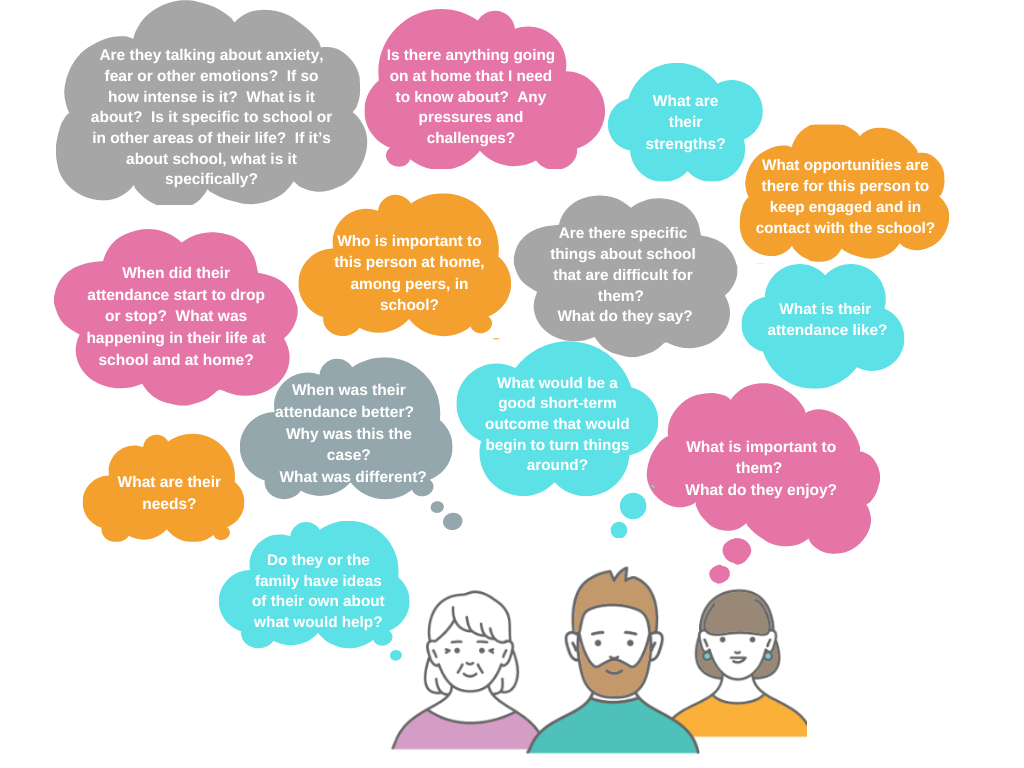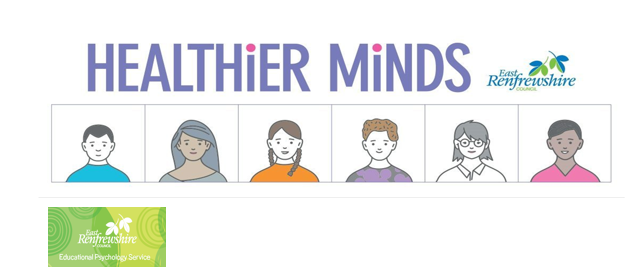In the very early stages, where EBSA is emerging, daily monitoring and checking in with parents / carers is best. They are often able to manage these situations themselves, so supporting them to feel empowered is very important. Simple adaptations can still be considered early on by practitioners to alleviate stressors that will undermine the parents’ / carers’ efforts to improve attendance, for example by:
- Making sure they are not challenged for timekeeping or uniform policy compliance;
- Removing deadlines for homework and upcoming assessments where possible;
- Making sure everyone who works with them is aware that they are finding things difficult;
- Being mindful and taking account of their vulnerability when responding to low and moderate levels of emotionally driven challenging behaviour.
Initiating contact and developing a relationship with the parents / carers is critical. Creating an alliance based on honesty, empathy and respect will help in times ahead if things get particularly stressful. If the parent / carer is struggling and or feeling judged or blamed, the possibility of ‘splitting’ between home and school is strengthened (they blame the school, the school blame them – the stalemate in which everyone loses, especially the young person). Therefore supporting parents and the young person to engage with the assessment and plan, and with relevant appointments with school and multi-agency partners, is extremely helpful.
In the process of assessment, a particular focus on the areas outlined in Figure Four, taking account of the child or young person’s views and needs in these areas, will be a useful starting point for developing an effective support plan:
Figure Four: Assessment areas for information gathering with young people and their families impacted by EBSA

Prompt questions can help practitioners to build an accurate picture for an individual’s circumstances, for example:

As effective intervention is critical in EBSA cases and in line with a staged intervention approach, practitioners should begin the process of assessment by carefully considering what can be done at a school level before looking outwardly to other services and agencies. EBSA cases require monitoring and support on a daily basis, and the capacity for change and improvement exists most prevalently within the core relationships that are developed between the child, their family and key practitioners within school.
After gathering all appropriate background information to understand the child or young person’s world, it is often helpful to develop a more detailed understanding of the function of their EBSA behaviour. The School Refusal Assessment Scales (Albano & Kearney, 2008) have been adapted by East Renfrewshire Educational Psychology Service to reflect developing terminology (with permission from author Chris Kearney) to support practitioners with this activity:
The EBSA Assessment for Children and Young People Appendix D
The EBSA Assessment for Parents and Carers Appendix E
They are relatively quick to complete and can support practitioners to understand why a young person is not attending school. They give an indicative score across four main areas to help practitioners identify which reason or ‘function’ is most dominant in the case of each young person.
The functions are:
- To avoid school-related objects and situations (stimuli) that provoke negative affectivity (symptoms of dread, anxiety, depression, and somatic complaints)
- To escape aversive social and or evaluative situations at school
- To receive or pursue attention from significant others outside of school
- To pursue tangible rewards outside of school
Once scored, this assessment is a useful starting point to find out if the young person is avoiding something school specific, or being pulled towards home where life may be a lot easier or more important than coming into the school building. This can then be discussed with the young person and their parents / carers to ensure ongoing, open communication and can be the starting point for individualised outcome focussed planning that is suitably specific to the nature of the problem.
The Questions for Families and School document (QFS) Appendix F can also be helpful in assessing the young person’s previous experience across family and school to date. It is useful to have these details to help inform next steps. The QFS can be also be used with practitioners who may be involved in supporting the young person e.g. the Educational Psychologist or Social Worker.
Children and young people who experience EBSA should be discussed at the school Joint Support Team Meeting (JST). Information and advice around EBSA assessment, support and intervention can be sought through this forum. Some cases will require the involvement of other agencies, particularly if there is a need for enhanced emotional wellbeing support, if there are unidentified barriers to learning and development, or if there are concerns around parental support needs.
Finally, the young person’s voice in the process of assessment and planning is crucial. The more consensus there is about where the challenges arise and what needs to be done, the more likely it is that the EBSA will be addressed successfully. In many EBSA cases, the young person will be experiencing a perceived lack of control and anxiety, so the more agency they experience and the more they feel like an equal partner in the plan, the less anxious they are likely to be, and all the more committed. This does not mean doing exactly as the young person says, but rather allowing them to explain their worries and supporting them, slowly and gradually, towards success. (West Sussex Council, 2021).

